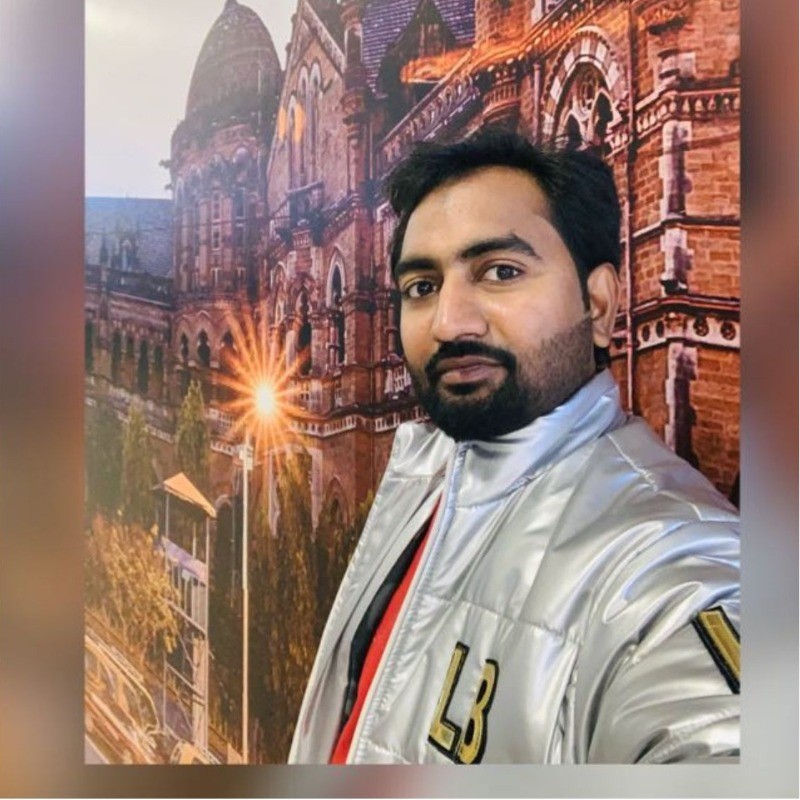
Integrating Local Features: Customizing Your Bolt Clone for Regional Success
As the ride-hailing industry continues to grow globally, startups and entrepreneurs are increasingly looking to launch platforms like Bolt or Uber with customized features that cater to local markets. While these platforms have established universal best practices, simply replicating them is often insufficient for long-term success. The key to capturing market share and creating a sustainable business lies in regional customization, integrating features that resonate with local culture, preferences, and needs. This blog explores essential strategies and features for localizing your Bolt clone, ensuring your platform is poised for regional success.
To succeed in the rapidly growing ride-hailing industry, startups should customize their platforms to meet local needs instead of merely copying popular models like Bolt or Uber. By tailoring features such as language options, preferred payment methods, and region-specific safety protocols, companies can effectively address unique local challenges. Customization can also include driver training, eco-friendly options, and strategic partnerships within the community. By gaining a deep understanding of the target market and integrating features that resonate with local users, ride-hailing apps can foster loyalty and establish a sustainable presence. With the right localization efforts, your platform can stand out and achieve regional success.
Understanding the Local Landscape
Customizing a ride-hailing platform begins with a deep understanding of the target market. This involves analyzing the local geography, socioeconomic factors, existing transportation networks, customer preferences, and competitor offerings. Conduct surveys, focus groups, and competitor analysis to get a comprehensive view of what residents need and expect from a ride-hailing service. By identifying local pain points, you can tailor your app to address them, differentiating your service in a meaningful way.
- Example: In a city where public transportation is limited, offering affordable and accessible options may be crucial. Alternatively, if there are areas with high traffic congestion, consider integrating dynamic pricing and route optimization for quicker travel times.
1Language Localization
Offering your app in the primary language(s) of the region helps bridge communication gaps and improves user experience. Go beyond simple translations to ensure cultural relevance, and hire native speakers who understand local dialects and slang.
- Example: In multilingual regions like India, enabling users to switch between languages such as Hindi, English, and regional dialects helps widen your reach.
2Payment Customization for Regional Preferences
Payment options are a crucial aspect of any ride-hailing service. While credit cards are standard in many markets, in others, cash, mobile wallets, and even cryptocurrency are preferred. By offering a range of payment methods that suit local habits, you create a seamless transaction process that encourages users to return.
- Mobile Wallets: In countries like Kenya, mobile wallets like M-Pesa are widely used, while in Southeast Asia, platforms like GoPay and GrabPay are popular. Integrate popular payment systems directly into the app to facilitate smoother transactions.
- Cash Payments: Cash is still king in many regions, particularly in countries with lower credit card penetration. Enabling cash payments can expand your customer base, appealing to those without bank accounts or credit cards.
- Cryptocurrency: For countries with high inflation or restrictive banking systems, cryptocurrency payments can offer an appealing alternative.
3Pricing Strategies and Localized Promotions
The cost of living, average income levels, and user expectations can vary widely between regions, so setting competitive and realistic fares is essential. Develop pricing models that balance affordability with profitability. Consider launching promotional offers that resonate with local events, holidays, and cultural practices.
- Dynamic Pricing: Adjust rates based on demand and peak travel times in specific areas to make pricing fair and profitable.
- Holiday-Based Promotions: Offer promotions for local festivals, holidays, or peak travel seasons. For instance, during Diwali in India or Ramadan in the Middle East, create special offers or discounts to attract more users.
4Local Driver Onboarding and Training Programs
A quality experience depends heavily on the drivers, so customizing driver recruitment and training programs to the region is essential. Conduct onboarding sessions in local languages and familiarize drivers with the app interface and customer service expectations.
- Driver Education Programs: Cab drivers in customer service best practices, regional navigation, and compliance with local laws. For instance, teaching basic etiquette for different cultural contexts can enhance rider satisfaction.
- Incentivize Safe Driving: Encourage and reward safe driving practices with bonuses or in-app badges. This can be particularly impactful in regions where road safety is a concern.
Also Read: Marketing Strategies for Launching a New Photo Booth App
5Integrating Local Navigation Features
Many emerging regions face challenges like unmarked roads, high-traffic areas, and frequent construction work, which can complicate navigation. By integrating reliable mapping tools that account for these variables, you can help drivers and passengers navigate more efficiently.
- Real-Time Traffic Updates: Include traffic alerts, accident reports, and route suggestions in real-time to help drivers avoid congestion and offer shorter trips.
- Landmark-Based Directions: In areas where GPS navigation might be unreliable, enabling landmark-based directions can improve trip accuracy. This feature is especially useful in cities with limited road signage.
6Incorporating Safety Features for Regional Requirements
Safety is a top priority for ride-hailing users, and regional safety concerns can vary significantly. Customizing in-app safety features based on local requirements and preferences can help build trust with users.
- Emergency Button and Alerts: Include an emergency button that directly contacts local authorities or the company’s customer service.
- Driver Background Checks: Conduct thorough background checks on drivers based on regional laws and regulations to ensure passenger safety.
- Safety Ratings: Allow users to view drivers' safety ratings and flag unsafe driving or behavior. Promote transparency by enabling users to rate their experience and provide feedback.
7 Emphasizing Local Marketing and Partnerships
Local partnerships and marketing strategies can be instrumental in building brand loyalty and establishing a strong regional presence. Partner with local businesses, brands, and influencers to increase visibility and trust in your platform.
- Local Sponsorships: Sponsor events or partner with local organizations to build a positive reputation in the community..
- Regional Influencer Collaborations: Partner with local influencers who resonate with your target audience, leveraging their reach and credibility..
- Cross-Promotions with Local Services: Collaborate with popular local services, such as food delivery apps, hotels, and retail stores, to provide bundled offers that incentivize users to choose your ride-hailing service.
8Customization for Regional Transportation Needs
Adapt the types of vehicles and service tiers available in your app to meet regional needs. Different regions may have different expectations and requirements for vehicles based on factors such as climate, road conditions, and user demographics.
- Bike Taxis and Tuk-Tuks: In some regions, offering two-wheelers or tuk-tuks as transportation options can be more cost-effective and appealing..
- Carpooling and Shared Rides: In high-density urban areas, providing carpooling options can reduce traffic congestion and lower costs for users. For example, apps in India and Brazil often offer ride-sharing options due to the demand for affordable transportation..
- Luxury Rides for Urban Centers: In metropolitan areas, offer premium services with luxury vehicles for users who prefer a higher-end experience. This tiered service model can appeal to a broad customer base by offering multiple options.
9Supporting Eco-Friendly Options
Environmental consciousness is rising globally, and many regions are promoting eco-friendly transportation options. Catering to this trend can help differentiate your platform.
- Electric Vehicle Options: In areas with EV infrastructure, offer users the option to select electric vehicles for their ride..
- Carbon Offset Program: Implement a carbon offset program for eco-conscious users, where a small donation can be added to offset emissions for each ride..
- Bike and Scooter Rentals: In regions with bike-friendly infrastructure, integrate bike and scooter rentals for shorter commutes, adding a green and convenient option for users.
10Localization of In-App Support and Customer Service
Customer support is a vital aspect of any ride-hailing service, and users often have questions or need assistance with bookings, payments, or app functionality. Ensuring that customer service is locally relevant and responsive can enhance user satisfaction.
- Localized Support Teams: Having support teams that understand the language, culture, and regional norms can improve response accuracy and empathy in handling complaints..
- In-App FAQ and Support Features: Provide easy access to frequently asked questions in multiple languages. For users who prefer self-service options, offer chatbot assistance or virtual help that includes region-specific answers.
11Utilizing Feedback Loops for Continuous Improvement
Once the app is launched, listening to user feedback is essential for staying competitive. Collect data on user preferences, common complaints, and emerging needs to refine your app continually. By actively engaging with users and making adjustments based on their feedback, you can foster loyalty and build a strong reputation.
- User Surveys and Focus Groups: Regularly engage with your user base through surveys and focus groups to identify new trends and areas for improvement..
- Social Media Listening: Monitor social media channels for discussions related to your app, and address concerns or feedback promptly.
Conclusion
In today’s competitive ride-hailing industry, it is essential to customize your platform to meet the unique needs and preferences of local markets for sustained success. Appicial Applications is a leading taxi app development company that provides robust and flexible solutions, allowing you to launch a platform similar to Bolt or Uber that is tailored for specific regional requirements.
By integrating localized features such as language options, diverse payment methods, customized pricing strategies, and eco-friendly alternatives, you can create a ride-hailing app that resonates with local users and addresses specific market challenges. Through comprehensive market analysis, thoughtful feature integration, and ongoing feedback, you can ensure that your app not only meets user expectations but also sets new standards in user satisfaction and engagement.
With the support of Appicial Applications and a commitment to localization, your ride-hailing platform will be well-positioned to thrive, attract loyal customers, and stand out in a dynamic and ever-evolving industry.
Looking out to start your own venture like Uber? Try out our HireMe Taxi Uber Clone, the easiest way to kick-start your taxi business.




